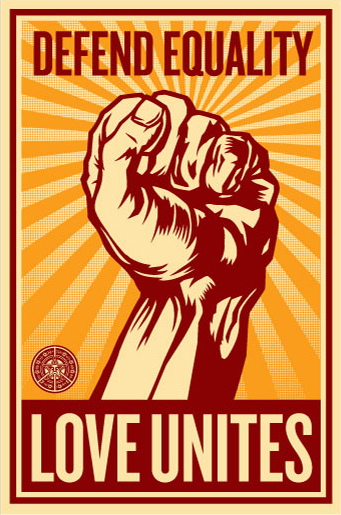
All the little bits of orange you see in the picture above are people.
This is not cool.
Can you imagine being stuck for 5 years living in a situation like this? How about 10 years? How about your whole life?
The *US has the largest prison population in the world*. On average, 1 out of every 32 people in this country are in jail.
In California, we spend close to $14,000 per inmate per year (see article below). This is money that could be invested in our school system to keep people out of jails and prisons in the first place. Some sources cite that it costs up to $46,000 per year per prisoner in a California prison.
The kicker is, by paying our taxes year by year, each individual American (or in this case, Californian) is choosing to use the money he/she earns everyday to keep people locked in jail--again, money that could be used to fund schools and scholarships to higher education to keep people out of jail in the first place.
This post presents you with an article on a case that is pending in the California judicial system.
Three judges are about to rule on whether the CA prisons are overcrowded, and if they rule that this is the case, then they will also rule that a large chunk of prisoners should be pardoned early, so that there are less people in jail.
Now, there are many opinions one could have on this ruling and this situation in general. We put it out to you all to discuss thoughts, and to share any extra information on this situation that you may have.
Please read the article on this issue, which you can find below.
Further reading - on Prisoner's Rights and Hurricane Katrina:
*Click here* to link to an expose done by the *American Civil Liberties Union* on the subhuman, cruel and unusual treatment of prisoners in New Orleans during the Katrina Hurricane.
Article:
Federal judges to rule on Calif. prison crowding
By DON THOMPSON
Associated Press Writer
Associated Press Writer
Monday, December 01, 2008
SACRAMENTO, Calif. (AP) — California's day of reckoning has finally come for three decades of tough-on-crime policies that led to overcrowded prisons and unconstitutional conditions for inmates.
The federal courts have already found that the prison system's delivery of health and mental health care is so negligent that it's a direct cause of inmate deaths.
A special three-judge panel reconvenes Tuesday and is prepared to decide whether crowding has become so bad that inmates cannot receive proper care. If they do, the panel will decide if lowering the inmate population is the only way to fix the problems.
That could result in an order to release tens of thousands of California inmates before their terms are finished, a move Gov. Arnold Schwarzenegger and Republican lawmakers say would endanger public safety.
"The time has come: The extreme, pervasive and long-lasting overcrowding in California prisons must be addressed," attorney Michael Bien, representing inmates, told the judges during the opening of the trial.
Bien and other civil rights attorneys want the panel to order the prison population cut from 156,300 inmates to about 110,000. That still would be above the capacity of California's 33 state prisons, which were designed to hold fewer than 100,000 inmates.
To relieve some of the crowding, state corrections officials have transferred nearly 6,000 inmates to privately run prisons out of state and have another 11,000 living in conservation camps or private prisons within California.
The overcrowding is apparent in many prisons. Nearly 14,000 inmates sleep in three-level bunk beds in converted gymnasiums and classrooms. The arrangement gives each inmate about six square feet of living space while increasing the risk of violence and the spread of disease, according to testimony from prison guards.
Some inmates are forced to use water stored in garbage cans to bathe because there are too few showers.
Sick inmates can wait in line for hours to receive medical care, while the mentally ill can wait more than a year for a bed in a treatment unit. The state's inmate suicide rate is double the national average, yet suicidal inmates are held for hours in cages the size of telephone booths because there aren't enough crisis cells.
Two of the three judges hearing the case previously ruled that the state is violating inmates' constitutional rights by providing such poor medical and mental health care.
Jeffrey Beard, secretary of the Pennsylvania Department of Corrections, blamed California's adoption of tough drug laws and three-strikes sentencing laws since the 1970s. The state has added more than 1,000 felony sentencing laws during the past 30 years, and its criminal code gives judges little leeway in deciding punishments.
"They went from being one of the most progressive systems in the country to one of the most overcrowded," Beard testified. "California has this problem that has just been going on for years and years and years, and nobody seems to be willing to step up to the plate and fix the problem."
Most inmates live in prisons with populations the size of small towns. Nearly half the prisons hold 5,000 prisoners or more, while nine exceed 4,000 inmates. Beard said the limit should be 3,300.
The administration argues that conditions are improving, in part because of the out-of-state transfers and because the state is spending more on medical and mental health care.
It will spend $2.2 billion this year to treat, house and guard physically and mentally ill inmates, a 550 percent increase since 1995. The prison's population grew about 30 percent during the same period.
Annual health care spending has increased from $2,714 per inmate in 1995 to $13,778 this year, according to the state Department of Finance.
Administration lawyers credited a court-appointed receiver's oversight of inmate health care for many of the recent, if costly, improvements. But the administration is fighting the receiver's demand for an additional $8 billion to build seven inmate medical and mental health centers at a time when the state faces an $11.2 billion budget deficit.
Schwarzenegger and Republican state lawmakers promise an appeal directly to the U.S. Supreme Court if they lose the case.
The state is trying to focus the judges' attention on the consequences of ordering prisoners freed before they complete their full sentences.
"Releasing 50,000 inmates to the streets is obviously a public safety risk and it doesn't fix the problem," Corrections Secretary Matthew Cate said in an interview. "There are still underlying problems and we want to fix them. Early release, though, isn't the way to do that."
The judges are acting for the first time under the federal Prison Litigation Reform Act of 1995. The act requires the judges to initially find that crowding is the main cause of substandard conditions, a ruling they are likely to make this week.
They then can order inmates released only if they find there are no other options for improving care. The judges hope to complete the second phase of the trial by Christmas.
"No one's on the same track as California at this point," said Amy Fettig, a prison lawyer with the American Civil Liberties Union. "It tells you they're in deep, deep trouble."













2 comments:
Good fill someone in on and this fill someone in on helped me alot in my college assignement. Gratefulness you on your information.
Post a Comment